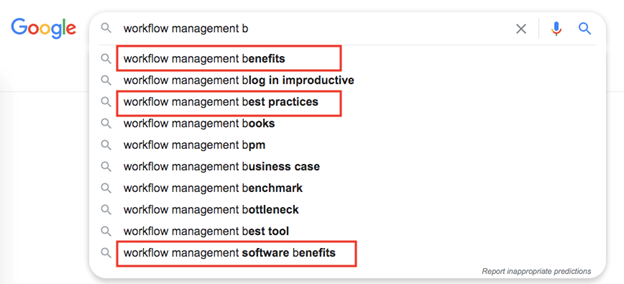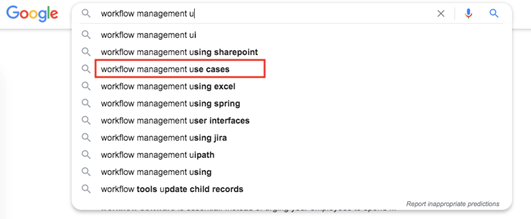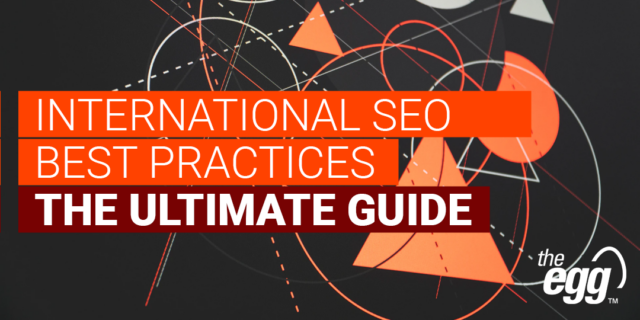How To Create Winning B2B Content For Asia
B2B Content Marketing in Asia – APAC in 3 – Episode 04
Despite perhaps obtaining a degree of brand awareness, B2B enterprises often still face challenges in expanding their target customer pool and turning interest into sales, particularly across the diversity of Asia.
And these challenges tend to arise from having to promote high volumes of varied products coupled with a long customer purchase cycle that involves multiple stakeholders and decisionmakers in vastly different regional markets.
Check out the video above (episode 04 – APAC in 3) for quick tips on how to tailor your content marketing for diverse Asian B2B audiences.
And for a deeper dive, read the full article below to discover 4 winning factors to maximize your Asian B2B content marketing strategy.
What is B2B Content Marketing?
Content marketing refers to creating and/or optimizing high-quality content that is of value to your target audience to ultimately attract and retain customers. This content can come in the form of blog articles, videos, infographics, how-tos, whitepapers, and more.
An optimized content marketing strategy can bring about many benefits for B2B companies, including:
- Reaching a larger pool of target customers
- Building online visibility across product categories
- Establishing credibility and trust in front of your target audience (digital branding)
- Guiding target customers through their decision-making process
- Strengthening existing customer loyalty
4 factors to MaXIMIZE your B2B strategy IN ASIA
The first step in devising a content strategy is deciding what content to create. For this, there are four main considerations.
Target Audience
Effective content stems from understanding your target audience: who they are, what they care about at each stage of the customer journey, how they search for information, what their challenges are in their jobs, and more. Essentially, grasping the kind of content your audience consumes—and how they consume it—is hugely beneficial.
Brand Positioning
Consider the message you want to convey through tone and visuals in your digital branding.
Value Proposition
Understanding your product’s value proposition and differentiator against your competitor’s lets you make it the selling point in your content.
Business Goal
Be flexible—you can reprioritize content depending on the importance of a product category or item to your brand.
Below, we will delve deeper into understanding target audiences—perhaps the most fundamental factor for deciding what topic to base your B2B content strategy around.
DISTINGUISH between B2B & B2C audiences
As a B2B enterprise, the first step in understanding your target audience is to understand the difference between B2B and B2C audiences.
The key difference is that B2C target audiences make purchases for themselves, while B2B audiences make purchasing decisions on behalf of their company.
Characteristics of B2B Customers: How will they influence your strategy?
Individuals making purchases on behalf of an organization are likely adept at logically justifying their decisions and restricting their emotions. Since their focus is on ROI, your B2B content should incorporate more product-related facts, examples, testimonials, and practical information.
Secondly, B2Bs bear higher switching costs since they will likely integrate new products into existing systems. As such, they will seek products that are scalable and practical in the long run. Thus, you can optimize your content for B2B audiences by driving awareness of the product itself and its use cases.
Finally, because decision-making could involve multiple people or departments, you can diversify your content portfolio to appeal to various stakeholders.
Identify RELEVANT topics for your ASIAN B2B audience
Now that we’ve examined the B2B audience characteristics, this next section will help you brainstorm content topic ideas.
Determine Your Target Audience
In the B2B world, there are three main types of target customers:
- Daily users of your product
- Gatekeepers—people who research and compare your product against your competitor’s for purchase consideration
- Decision-makers or stakeholders who have the final say on what to buy on behalf of the company
To illustrate this ecosystem, let’s suppose your company sells an array of industrial-grade adhesives for assembling automotive parts in cars. In this case, your daily users would likely be car mechanics who apply adhesives onto automobiles.
Additionally, your target audience might include automotive design engineers who need alternative materials to produce new car designs (gatekeepers). Gatekeepers could also include process engineers seeking cost-effective adhesive materials that fit their existing manufacturing and assembling process.
The procurement teams of your B2B clients (stakeholders) might ultimately have the final say on what gets purchased, so they should also be regarded as your target audience.
Understand THE PURCHASING NEEDS OF ASIAN BUYERS
To understand your audience’s needs, think in their shoes about what information they would need to make a purchasing decision. You can think of needs in terms of:
Economic Needs
B2B customers look for value. Highlight cost-saving and other cost-related factors in your content.
Brand Influence
Brand has significant influence on B2B purchasing decisions. For example, if your target customers need sustainable products, you could write content about corporate social responsibility and environmental, social, and corporate governance.
Integrability
Is your product customizable? Is it easy to install or integrate with other systems? Write content with these as selling points.
Longevity
How long will your product last? How long can it be stored? Highlight these attributes in your content.
Scalability
How many people or processes can use your product? Explain how your product will make your customers’ jobs easier.
Technology
What features are useful in your product? Are there standards that your customers need to comply with when using it? Share this information in your content so your audience can understand exactly how your product can be applied to their unique needs.
And here are some methods to learn about your target audience’s needs:
- Read industry-related news: What are the recent trends? Are there new technologies that would appeal to your target customers?
- Tap into industry data from Statista or other research publications.
- Create an exit pop-up asking your website visitors what information they would’ve liked to see on your webpage.
- Get customer feedback to understand what they liked and disliked about your content.
- Monitor competitor website content: Your competitors may have already published similar content on their website. Assuming your competitors executed their content strategy after extensive research, you can get hints on your audience’s needs through what your competitors cover.
- Check e-commerce descriptions and product reviews: If e-commerce platforms also list similar products, you can evaluate what users liked and disliked about those products. Then, you can think how those reviews would transpire in an entrepreneurial environment.
TAILOR YOUR CONTENT FOR B2B SEARCH BEHAVIOR
After getting these initial ideas of your target audience’s needs, the next step is researching how they express those needs through queries (keywords) on Google search. Through keyword research, you can understand the nuances surrounding those needs and create content that better suits them.
For instance, let’s assume your company sells enterprise-grade workflow management software.
In this case, you would find that your target audience likely needs a versatile system to organize workflows across numerous departments.
The following approach illustrates how you might deduce their needs through Google search.
4 TIPS FOR B2B KEYWORD RESEARCH
1. Use Google auto-suggest
Firstly, input a general query of your product type (e.g., “workflow management”) into Google search.
Google will suggest commonly-searched phrases that users input, like “workflow management benefits” and “workflow management best practice”. Such search terms imply that potential customers screen the advantages of using a workflow management system before determining the best way to implement it.
Google’s auto suggestions for “workflow management”
Another auto-suggest result (“workflow management use cases”) hints at questions that potential customers might have about managing workflow in different situations.
Google’s auto suggestions for “workflow management”
Based on these insights, your content can highlight the benefits of workflow management for different departmental purposes. You can highlight product features and provide examples of how they benefit users in different case scenarios.
2. Use keyword research tools
Generate a list of related keywords or topics using analytics tools, like the keyword research feature from Dragon Metrics.
Dragon Metrics can assess the average monthly search volume for a query in a specific country. Using this information, you can prioritize which keywords or search queries to apply to your content.
3. Understand the preferred format of information
Once you’ve compiled a list of relevant keywords by topic, you should examine what content formats show up the most on Google search for those keywords. Some searches will display more blog content, while others may show more videos above the fold.
The content format that populates search results is what users prefer. Google’s database determines this based on what format gets the most clicks and satisfies search intent for a particular query. Therefore, you should evaluate search results to decide how you can best present your content.
4. Optimize for different devices
Ensure your content is easily digestible on any device, particularly mobile. From 2020 onwards, Google has increasingly used a site’s mobile content and UX to determine its search ranking. You can learn more about mobile-first indexing through Google’s best practices.
***
Content marketing improves your brand visibility across different product categories and funnels target customers along their chain of decision-making.
Strategizing your B2B content marketing comes down to understanding your target audience, especially given their uniqueness from B2C audiences. Tailoring your content to their needs and behaviors will work to increase your sales and strengthen brand loyalty.







